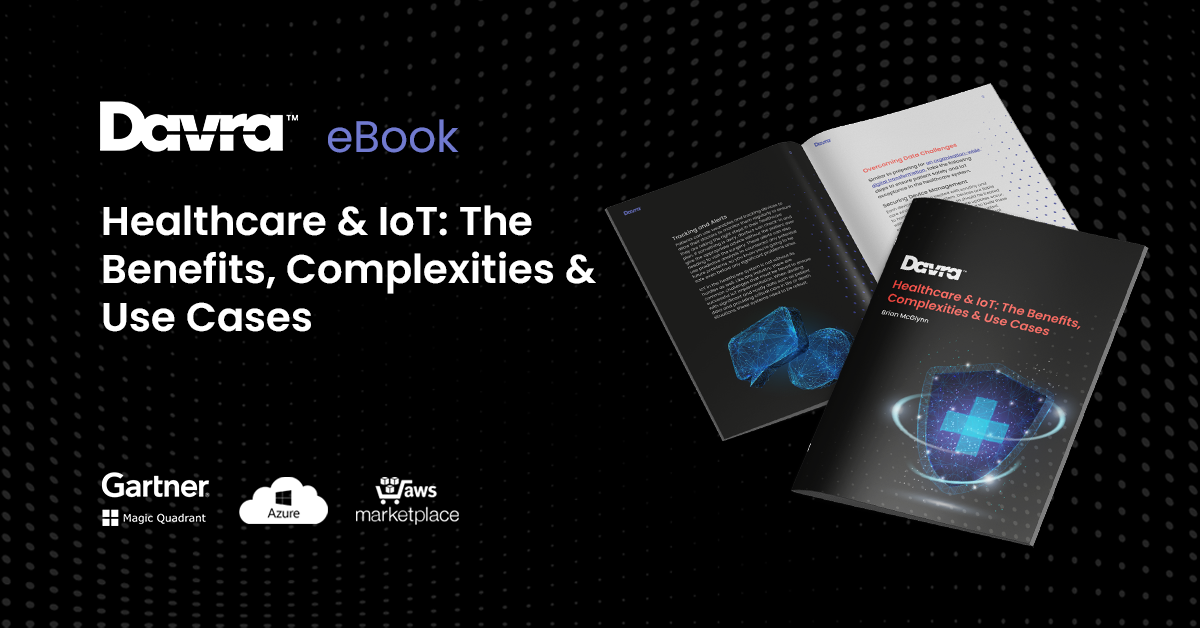IoT in Healthcare Use Cases eBook
Download Your Free IoT in Healthcare Use Cases eBook
Read More


AI and Big Data feed into IIoT, developing new processes within organisations and supply chains, which bring about huge digital transformations. In order to implement an IIoT solution in any organisation, change needs to be expected to evolve this new business model.
We’ve adapted to counting our steps and linking our smart watches to better improve our cardiovascular strength. We talk to our smart speakers when we want to play some music or find out information from Google, and our cities and building are getting smarter. We’ve changed our habits and daily systems so why not apply these same smart and efficient transformations to our work processes too.
Increased competitiveness, better efficiency, enhanced customer experiences and services, and faster innovation are a few of the IIoT benefits, but sitting down with your team to put the strategies in place is vital for the organisation to survive and adopt these new technologies.
How do we go from manual system updates and paper chains to constant, steady streams of data and edge computations?
Although IIoT is a much more complex set of processes and requires IoT platform experts, the factors that affect digital transformations and their success also relate to whether or not the IIoT will be successful.
Before you reach out to any company to discuss how an IIoT solution can take your organisation to the next level, you should first figure out what parts of your business strategy you want to improve. Do you want to reduce system and asset downtime? Increase production speeds or reduce costs and product errors in the supply chain?
Figuring out exactly what goals you want your business to achieve, and then applying a map through IIoT to these goals means the right technologies are applied to the right processes, and the correct data and metrics are driving the business decisions down the line. Without these clear goals, it is also difficult to get everyone on board and can cause confusion amongst departments.
Rather than bringing in outside consultants, find people already working in the organisation who can push the project forward and know the organisation and culture well enough to drive the IIoT implementation. Using the best of your team means they are well-versed in the organisational goals, they know the system nuances and will also be better able to relay these changes to their teams.
Rather than fitting an off-the-shelf solution brought in by consultants, these powerful insiders know what will and won’t work amongst their work mates. Finding a solution that will suit the organisation’s culture and keep them engaged throughout the implementation and beyond is key to successful technology adoption.
If your goal is to improve errors made early on with products and thus improving customer service, then design your new system with the customer in mind. Conduct interviews with customers and those further along the supply chain to see how you can better improve your products, deliveries and other services.
Bring them into your organisation to make them part of the process; how are they alerted down the supply chain? You could open up the platform to customers to let them in on the latest trends or let them know when inventory will be replenished.
In the automotive world, where car parts can go missing, or in smart cities where bringing in pedestrians to see how these new data insights will affect them can have a massive impact on the overall IIoT infrastructure. The same can be said for digital transformation, bringing in the end user will aid the overall system and its outputs will have a positive effect
The advent of Industry 4.0 and Smart Factories means the supply chain and organisations become living and moving things; constantly sending and feeding data to the cloud and using AI models to predict the next trend, or when a piece of equipment or tool is about to lose power.
With these always-on factories and environments, developing agile and quick prototyping is key to a successful IIoT organisation. Because of the IIoT complexities and vast amounts of devices always connected to the cloud, with lots of interdependent processes also happening at the same time, it’s imperative that decisions are made quickly about what technological processes to adopt and what needs to change. Rather than following hierarchical structures when making these decisions, test out different teams with various capabilities who can make these unanimous decisions.
In the IIoT world, digital twins can be deployed to test out assets and their functions on the cloud before testing them physically. This type of asset modelling can quicken the process substantially, rather than wasting time testing something only to go back to the drawing board.
Both IIoT and digital transformation can bring about fear and resistance in some people, but that is of course if they’re not aided with the proper tools and techniques to bring about this change. Change is a complex process, and one that if it isn’t managed properly can make the investment defunct and be a waste of money.
At Davra, we sit down with our clients to give a full run down on your current operations, and develop a map to bring your whole organisation on this journey, without leaving anyone behind. Like anything, early adopters will develop the right system and business processes to give them the competitive edge for years to come. Contact the Davra team today to see how you can carve out IIoT space and bring your organisation along as a big team to ensure great success.
Brian McGlynn, Davra, COO
Download Your Free IoT in Healthcare Use Cases eBook

Davra IoT is the only Industrial IoT Platform Available on AWS Marketplace
Read MoreThe Collaboration of Humans & Robots Has Created The Cobot
Read More